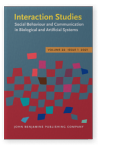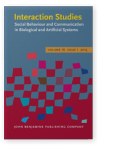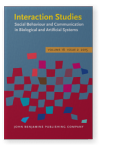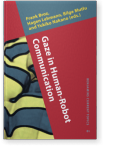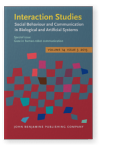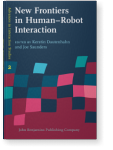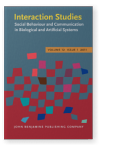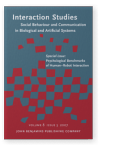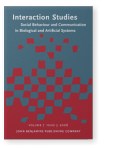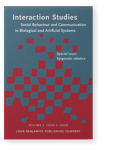Hiroshi Ishiguro
List of John Benjamins publications for which Hiroshi Ishiguro plays a role.
2021 Effect of synchronous robot motion on human synchrony and enjoyment perception Interaction Studies 22:1, pp. 86–109 | Article
Enhancing synchronization among people when synchronization is lacking is believed to improve their social skills, learning processes, and proficiency in musical rhythmic development. Greater synchronization among people can be induced to improve the rhythmic interaction of a system with… read more
2015 The role of social eye-gaze in children’s and adults’ ownership attributions to robotic agents in three cultures Interaction Studies 16:1, pp. 1–28 | Article
Young children often treat robots as social agents after they have witnessed interactions that can be interpreted as social. We studied in three experiments whether four-year-olds from three cultures (China, Japan, UK) and adults from two cultures (Japan, UK) will attribute ownership of objects to… read more
2015 Inconsistency of personality evaluation caused by appearance gap in robotic telecommunication Interaction Studies 16:2, pp. 249–271 | Article
Compared with other communication media such as cellphones and video chat, teleoperated robots have a physical existence which increases the feeling of copresence. However, the appearance of a teleoperated robot is always the same regardless of the characteristics of its operator. Since people can… read more
2015 Can infants use robot gaze for object learning? The effect of verbalization Gaze in Human-Robot Communication, Broz, Frank, Hagen Lehmann, Bilge Mutlu and Yukiko Nakano (eds.), pp. 33–46 | Article
Previous research has shown that although infants follow the gaze direction of robots, robot gaze does not facilitate infants’ learning for objects. The present study examined whether robot gaze affects infants’ object learning when the gaze behavior was accompanied by verbalizations.… read more
2013 Can infants use robot gaze for object learning? The effect of verbalization Gaze in human-robot communication, Broz, Frank, Hagen Lehmann, Bilge Mutlu and Yukiko Nakano (eds.), pp. 351–365 | Article
Previous research has shown that although infants follow the gaze direction of robots, robot gaze does not facilitate infants’ learning for objects. The present study examined whether robot gaze affects infants’ object learning when the gaze behavior was accompanied by verbalizations.… read more
2011 Validating characterizations of sociality in HRI: It’s more than psychometrics New Frontiers in Human–Robot Interaction, Dautenhahn, Kerstin and Joe Saunders (eds.), pp. 57–72 | Article
As the HRI field evolves, researchers increasingly seek to provide characterizations of sociality in human-robot interaction. But how does one assess whether the characterizations are valid? Using design work on “interaction patterns” as a case in point, this paper offers 5 approaches toward… read more
2011 Can young children learn words from a robot? Interaction Studies 12:1, pp. 107–118 | Article
Young children generally learn words from other people. Recent research has shown that children can learn new actions and skills from nonhuman agents. This study examines whether young children could learn words from a robot. Preschool children were shown a video in which either a woman (human… read more
2007 What is a Human? Toward psychological benchmarks in the field of human–robot interaction Psychological Benchmarks of Human–Robot Interaction, Kahn, Jr., Peter H. and Karl F. MacDorman (eds.), pp. 363–390 | Article
In this paper, we move toward offering psychological benchmarks to measure success in building increasingly humanlike robots. By psychological benchmarks we mean categories of interaction that capture conceptually fundamental aspects of human life, specified abstractly enough to resist their… read more
2006 An approach for a social robot to understand human relationships: Friendship estimation through interaction with robots Interaction Studies 7:3, pp. 369–403 | Article
This paper reports our research efforts on social robots that recognize interpersonal relationships. These investigations are carried out by observing group behaviors while the robot interacts with people. Our humanoid robot interacts with children by speaking and making various gestures. It… read more
2006 The uncanny advantage of using androids in cognitive and social science research Interaction Studies 7:3, pp. 297–337 | Article
The development of robots that closely resemble human beings can contribute to cognitive research. An android provides an experimental apparatus that has the potential to be controlled more precisely than any human actor. However, preliminary results indicate that only very humanlike devices can… read more
2006 Toward social mechanisms of android science: A CogSci 2005 Workshop: 25 and 26 July 2005, Stresa, Italy Epigenetic robotics, Metta, Giorgio and Luc Berthouze (eds.), pp. 289–296 | Article
